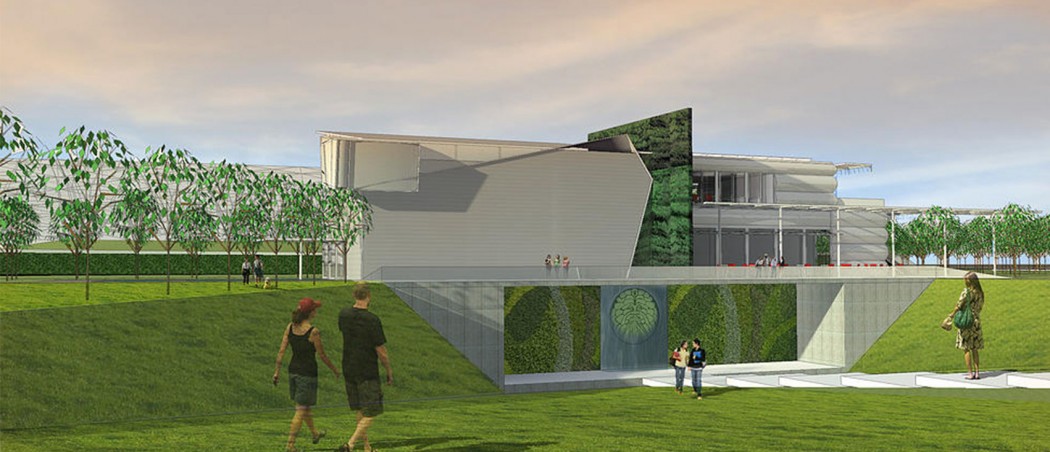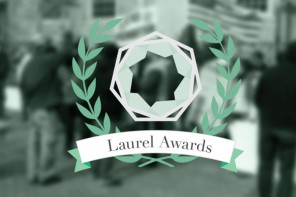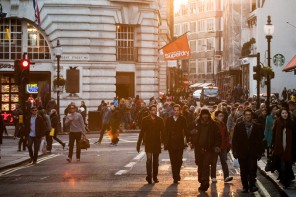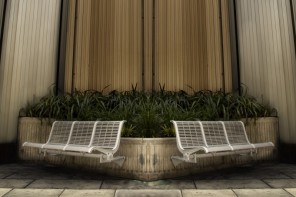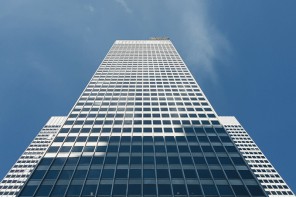American Cannabis Partners’ $35Mil Cannabis Ranch Project in the Works
Within the last ten years, America has experienced a boom in the craft beer industry that has directly led to the creation of thousands of new breweries all over the country. This shouldn’t necessarily come as a surprise, however, as wineries have been popular throughout the country for decades, if not longer. Christian Hageseth, Founder of Green Man Cannabis and American Cannabis Partners (ACP), noticed that the cannabis industry would be perfect to support a similar business model and so he went to work designing, funding and creating the Colorado Cannabis Ranch, the first ‘weedery’ of its kind. The $35Mil. facility will include greenhouses, an amphitheater, tours of the facilities, a gift shop and a restaurant that will serve guests who visit the cannabis ranch. In addition to a possible on site cannabis testing facility, Hageseth and American Cannabis Partners are also working on a hotel addition to the property that would be cannabis friendly and allow for guests to achieve a more all encompassing cannabis experience. If you’re anything like us, you have all sorts of questions as to how Christian came up with this idea, how he is raising the $35Mil. and how he is putting the whole plan together. The following conversation answers those questions.
When is the anticipated opening of the cannabis ranch?
The ranch will likely be opening to the public in mid to late 2016.
The greenhouses will open privately, substantially before that. We will actually open up the greenhouses and begin the cultivation process as we finish building out the surrounding public facilities. The ranch is really two things. On one hand, it’s a large-scale production facility, just like a brewery. Why does someone build a new brewery? So you can make more beer at a better price. We will be moving into greenhouses and out of warehouses. This will increase our square footage so that we can produce a lot more product at a more economically responsible price while also becoming more environmentally friendly. That part of the business will likely open early 2016.
From the grandma who doesn’t know much about the industry to the cannabis aficionado, I want to create a venue that is comfortable and educational for all walks of life.
The public facing part will open after that. This part of the ranch is to invite the public in to have an experience both with cannabis and our brand specifically. Our goal with public interaction is to demystify cannabis for those who might maintain that stigma that had plagued the industry for so long. We see that stigma going away, and we want to contribute to the reason it continues to fade. The greenhouses are the primary build, since that is really the essence of the ranch, like a brewing system would be for a brewery. Once that is up and running, the public side of the ranch will be completed so we can invite consumers to come try the full experience of our ranch.
What is the amphitheater going to be used for? Music, bands, theater?
Yes to all of that.
Music and cannabis go together like peanut butter and chocolate, better than peanut butter and jelly. We will feature bands, theater, yoga, dance, community events and farmer’s markets. The initial design right now is to leave it as an outdoor amphitheater. However, if we choose to host the hotel onsite, we will likely cover it and build the hotel on top. We would like to leave it as exposed to the elements as possible so that we can host all sorts of community events. It’s about community.
We want to demystify people on the subject of cannabis.
We want to demystify people on the subject of cannabis. We don’t want people to simply visit, take a tour and leave. We want them to come in, take a tour and have a reason to spend some time here.
For the uninitiated, like grandma from Iowa for example, that comes out to visit with her two grandsons after they pick her up at the airport. They are all excited about the ranch and they want to go and check this out, but she’s not excited. I want to change that. I want it to be a pleasant experience for everybody. From the grandma who doesn’t know much about the industry to the cannabis aficionado, I want to create a venue that is comfortable and educational for all walks of life.
What were you doing before you started Green Man Cannabis and ACP?
I’ve been a lifelong entrepreneur. I got into the cannabis business in 2009 when I started legally growing with the predecessor company to Green Man Cannabis. Before that, I moved up to Seattle post college and started an ice cream company. I grew that business to three locations and then sold it. Then I got into the technology business and was chasing stock options that never turned into anything, other than a bunch of wallpaper.
After 2001 and 9-11, I got out of technology and I started raising money to assist in the founding of a mortgage bank. Over the next couple of years, we raised a great deal of money to get the venture underway. I was also doing real estate deals at the time, since they intertwine seamlessly with the mortgage side of the industry. Eventually I started a real estate company as well because of the success we had attained.
The specific idea to build the ranch was more of a divine thought.
From 2004 to 2008, I was putting together this novel form of financing for real estate package purchases. In 2008, I was working on a public offering that we took to the SEC, but it never got registered. The SEC turned it down because of what was happening in the mortgage and real estate markets at the time. I ended up losing my shoes in that venture and had to shut that company down in 2008. In 2009, I was playing golf with my attorney and good friend. One of the other guys in the foursome was Jake Salazar, who currently runs MMJ America. He was about to open his first dispensary and he spent eighteen holes smoking cannabis and talking about all the possibilities the cannabis industry had to offer. That is how I ended up getting into the cannabis business.
How did you come up with the idea to go with the ranch concept? What was that moment like and how did you come up with that idea?
I’ve said this a lot and it’s really true. Sometimes you have to sit down and really craft an idea, other time the idea finds you.
The specific idea to build the ranch was more of a divine thought. I saw this concept, in its completeness, in my head in 2010. I spent a year or two talking with people about how great it would be and how it would work.
Before the thought hit me, the seed was planted early on in my cultivation career. As soon as I opened my first grow there was so much interest from people who wanted to come see it. Every time I had a new visitor I would get the same reaction as I took them through the entire process. “No way! Oh, my gosh! That’s amazing. That’s so cool. I had no idea.” It was especially clear that the non cannabis educated public was very interested in how cannabis is grown, packaged and sold.
Since we can’t smoke cannabis onsite, we wanted to at least offer a restaurant and rooftop bar so that when visitors are done with the tour they have a place to relax.
For some I think the interest stems from cannabis still being somewhat illicit. For others, it’s the same reason why they might go tour a brewery or a winery. They simply want to peek behind the scenes. That was really the genesis of the ranch. I’ve often said it was like when Michelangelo realized that David was in the marble and his job was to let him out. Michelangelo didn’t necessarily design David, he just knew what he had to do to let it out. It really felt the same way for me. The idea came to me and it was really clear what needed to happen and I’ve been working on it ever since.
The idea for the ranch has been refined quite a bit. For instance, the amphitheater was added later in the development of the project. I knew I wanted to have that traditional sense of a brewery or winery, where you can go and take the tour and end in the tasting room and have those kind of functions. Since we can’t smoke cannabis onsite, we wanted to at least offer a restaurant and rooftop bar so that when visitors are done with the tour they have a place to relax. After we put in the restaurant concept, that’s when we realized we had some extra space and could build our amphitheater.
What sort of amphitheater did you decide to build?
We talked to AEG and they made it clear that Denver needs a 3,500 to 5,000 person amphitheater or music venue. If we had one of those, they would be really in booking bands for it because it filled a niche that had been previously left empty. They didn’t have a venue that size in their arsenal and there are a good amount of national and regional touring bands that would like to play in a slightly larger venues. Not quite Red Rocks, but bigger than Fiddler’s Green.
You’re thinking about adding a product testing lab on the facility grounds as well?
Yes, I spent some time discussing this possibility at a conference recently, talking about what that would mean for our entire operation. What does it mean to be latest and greatest? What technologies will we be deploying? I had a chance to talk to people from CannLabs about possibly doing a testing facility on site that would remain independent. We could incorporate them into our facility and, again, for the purpose of educating people, demystifying the cannabis plant. Visitors on the tour could see what happens in the testing facility. We could walk them through the process and they would understand how testing is done and who the people doing it are. We want to show that true image of scientists in lab coats, testing the product to be sure that all claims are verified and labeled accurately. That will go a long way in term of legitimizing the whole process.
The overall goal is to normalize people’s perception of cannabis.
What would you say some of the biggest hurdles you’ve encountered are?
I would imagine our biggest hurdle was the same that most entrepreneurs have faced in this business, and that is raising the capital you need to get your project funded. There are many people interested in getting into the cannabis business but, when we started courting really large investors, it became difficult to get people them to commit $1Mil-$5Mil for a project like this.
It was a hurdle for us, but one that we knew would be there because it isn’t a new problem to the industry. A lot of entrepreneurs and investors like the cannabis business, but when they realize that it is still federally illegal and the feds could in and seize all of their assets, a lot of people then back out of it.
Another, more specific issue that we encountered came in the land that we searched for so that we could build the facility. We purchased some land last year that had some very serious environmental issues with it and we ended up having to sell it. It was just going to be too much to fix. The estimated cost was going to be $8Mil to remediate the environmental damage to the land. That was another setback that we encountered.
What’s the overall goal of the cannabis ranch?
The overall goal is to normalize people’s perception of cannabis. It doesn’t have to be some mystical plant that we know nothing about. Instead, our facility will provide transparency to every part of the cannabis process like never before.
I get so excited about it because we are the ones who get to do this. We’re building a legal weedery, just like a brewery or a winery, but for legal cannabis. We’re actually making it happen. If this were anywhere else in the world, I would go visit. If somebody built this in Amsterdam, Barcelona or Southern California, I would go.
I get so excited about it because we are the ones who get to do this. We’re building a legal weedery, just like a brewery or a winery, but for legal cannabis.
The fact that we actually get to do this is the absolute coolest possible thing that I can think of. Personally, I love that, that’s what I want to do. I want to build it. It’s kind of like the field of dreams. If you build it, they will come. I just know that we’re going to build this and people are going to come in and check it out. It truly is a passion project for me and the overall goal of the ranch reflects our passions, to educate, normalize and inspire people.
Can you give us a little insight entrepreneurially as to how you can go about seeking $35Mil in funding? What kind of advice would you give an entrepreneur about the process?
Persistence and flexibility.
I have been told no by so many people in so many different steps in this whole process. The fact that I haven’t given up and we’re actually making this happen is almost unreal to me. There have truly been times where people that are closest to me in business have just said, “Dude, you have to stop. This is ridiculous. You are not getting the answers you want. It’s not happening.”
The fact that we actually get to do this is the absolute coolest possible thing that I can think of.
I won’t accept that. I’m too persistent. Steve Jobs had a really great quote to that effect, “One of the biggest differences between a successful entrepreneur and an unsuccessful entrepreneur is persistence.” If you don’t give up, you’ll get there. Persistence is a huge part of this project, as it is in any entrepreneurial endeavor.
The idea I mentioned is flexibility. We have had to maintain a very flexible attitude throughout this process, especially when we started putting the deal together that required us to raise $35Mil. I had this vision in my mind about what I thought that process should look like. Instead, I have had to be so flexible as we have brought in funding and met with people who said, “We want to do it this way.” or “Yeah, but you can’t do it that way, you have to look at it this way.”
I would take those people’s input and bring it into the deal as best we could. I would have to reshape and reform the process constantly. I don’t have pockets full of cash or a rich uncle behind me, so it was really about getting other people with the capital to buy into this vision. It took a lot of flexibility.
You have a history of success in the cannabis industry, with two Cannabis Cup titles so far, correct? Do you think that helped you at all in your pursuit of this venture.
Absolutely it has. I’ve got four Cannabis Cup titles now. We won two more this year. What’s weird about the cannabis industry is that I’m six years into it and that makes me one of the old guard. In most industries, if you are six years in, you are still fetching coffee for somebody. I also wrote a book called, ‘Big Weed’. Having a profile and a name in this industry that other people can Google really provides you with some instant credibility. That can open up doors for you. However, you still have to be able to execute once you get in that door.
It’s kind of like the field of dreams. If you build it, they will come.
To give you an example, I was talking to somebody from the British Royal Family yesterday who got word of what we’re doing and wanted to learn more about it. They were really coming at it from the medical cannabis angle. Having a track record and string of successes that you can point to goes a long way in giving investors or potential business partners the encouragement that they need to believe in you. I certainly think my background in the cannabis business, over the last six years, as well as what we’ve been able to accomplish has been really helpful.
Could you touch on your book: ‘Big Weed: An Entrepreneur’s High-Stakes Adventure in the Budding Legal cannabis Business’. What do you think entrepreneur’s could gain from reading this?
It’s a business book, published with Macmillan in their Trade Press Division. It was written to be a business book about the cannabis industry. A lot of the content comes from insights to the specific challenges that we’ve faced over the past six years in this industry.
Having a track record and string of successes that you can point to goes a long way in giving investors or potential business partners the encouragement that they need to believe in you.
Early on, there was a real fear of the difference between federal and state regulation. Although what I was doing was legal in the state of Colorado, it was illegal nationally on a federal level. There was a lot of dealing with that fear in the book. How do you work within these two different worlds? I had two sets of financial books for my business because on a state level I can deduct all of my necessary and ordinary business expenses, however, on the federal level, I can’t. Cannabis doesn’t get the 280E exemption. So I had to have one set of books that I could report to the state, that actually shows all of my deductions and expenses. Then I had a separate set of books that goes to the feds and takes out those things that I can’t deduct from my federal return.
The book covers hurdles like that, in addition to challenges with landlords, service providers and a number of other consideration you don’t realize will be a hurdle until you face them. It gives people a realistic perspective of what those successes and failures look like. The book also talks quite a bit about the development of the ranch as well. What the catalyst, the original idea for the ranch was and then how it was developed. It’s meant to be a business book for aspiring entrepreneurs that are interested in getting into the cannabis industry.
What did you look for in a location? What did you have to build in regard to the ranch?
The location is critical in a project like this and I think the ranch is going to be a bit more of a destination location. In any retail business, the three most important things are location, location, location. Well, that doesn’t necessarily apply to this. I wanted, more than anything, to be located in the city and county of Denver. There are five counties that surround Denver, none of which are very cannabis friendly, so we wanted to be as close to the hub of the action as possible.
I wanted, more than anything, to be located in the city and county of Denver.
In addition, there is a new Light Rail line that is going to be operation in 2016, so we wanted to be sure our location was close enough to that so visitors could use it as a viable transportation method. The Light Rail will connect downtown Denver to the Denver International Airport. So for instance, you could come visit during a long layover, or perhaps plan a quick day in between your flights to come check out the facility.
Come in, buy a joint and take a tour of the grounds.Then go to the rooftop bar and have a hamburger and a beer while listening to a little live music. Hop back on the Light Rail and get back on your flight. I wanted to open up to a type of cannabis tourism that would really be inviting.
A big part of our goal is that I want to bring as many people as we can through this facility so that we can demystify cannabis. When people see that cannabis is grown in these really professional environments by people who clearly care about what they do, they will have more confidence, be less ignorant about cannabis and will be more likely to accept it as well as the industry as a whole. By doing these things, it changes the industry. It changes the dialog. When Kentucky, Mississippi, Georgia and Louisiana are considering legalizing cannabis, those people can come out to our facility and check it out. They are going to leave with a positive impression of what’s going on.
What’s on the horizon? What should we look for?
We’re constantly looking for opportunities to innovate products. We will experiment with the idea of incorporating cannabis into a special food menu. Visitors can expect to be in the presence of the highest quality marijuana possible. Green Man Cannabis has won four Cannabis Cups – the highest award for product excellence in the world. We plan to uphold that standard at the Colorado Cannabis Ranch.
American Cannabis Partners is working on a TV show, as well as a movie that stars Melanie Griffith that will be out next June. We are doing some branded cannabis product placement within the movie. For instance, If you watch a movie and you see someone holding a Starbucks cup, that’s product placement. We are actually going to be placing a branded cannabis product in this major Hollywood release, which comes out next year. In support of that we will also be putting those products in dispensaries in every legal state we can. Overall, we are simply excited to be on this wonderful journey and I can’t wait to see what the future holds.
What are you impressions in regards to the ‘weedy’ idea? Would you visit? What part would you look forward to the most? Join the conversation and comment below!

